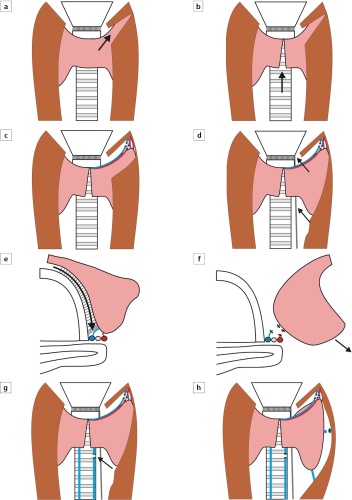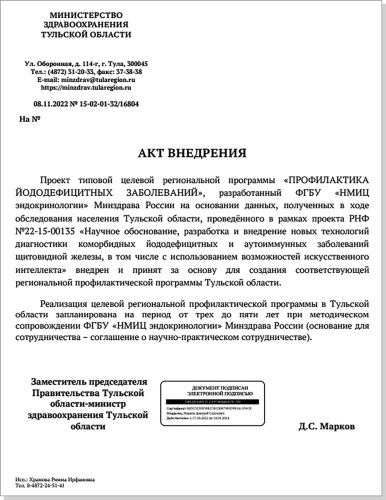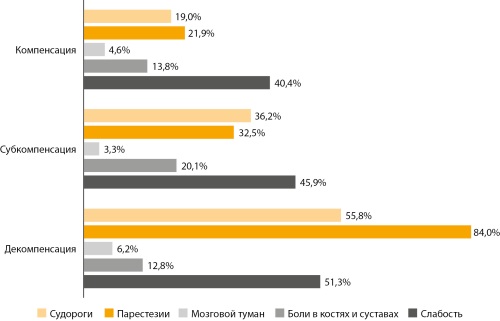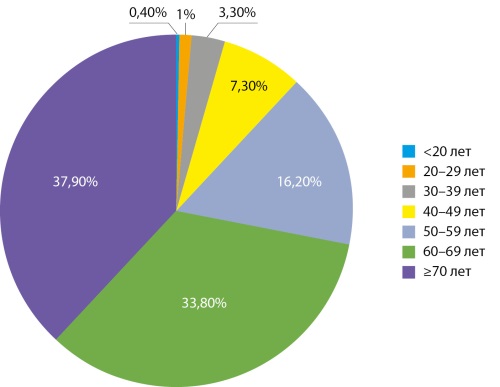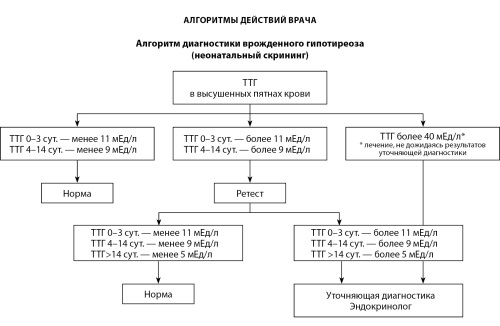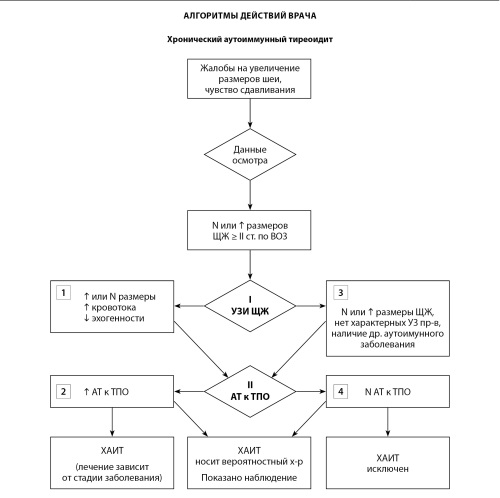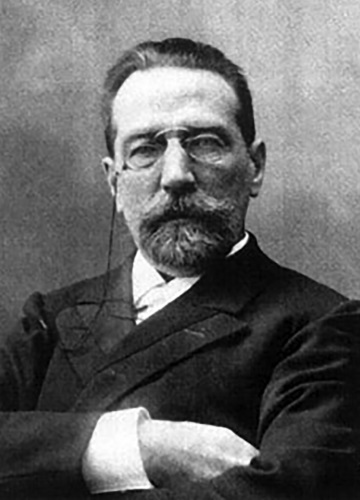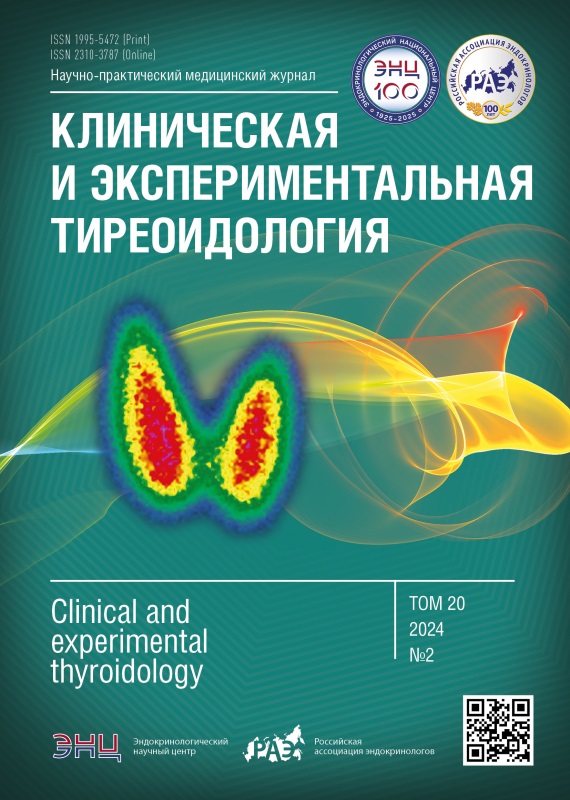
Original Studies
BACKGROUND: Despite technical improvements in surgical equipment, a significant number of studies report a high incidence of recurrent laryngeal nerve paresis and hypoparathyroidism. In order to reduce specific complications, we have proposed an alternative method of performing thyroidectomy — tension-free thyroidectomy (TFT) with medial access to the recurrent laryngeal nerve (RLN) and parathyroid glands.
AIM: Assessing the effectiveness and safety of the TFT method.
MATERIALS AND METHODS: The study included patients who were treated at the Saint Petersburg State University Hospital in the period from 2020 to 2024. The study is prospective, non-randomized. Patients were recruited using the continuous sampling method. The criterion for inclusion in the study was the patient’s consent to the proposed surgical method, age over 18 years, and the absence of previous operations on the thyroid gland. Exclusion criteria included laryngeal paralysis identified before surgery and previous operations on the thyroid gland. The primary control point is the development of laryngeal paralysis. Secondary control points are the development of persistent hypoparathyroidism, the development of transient hypoparathyroidism and hypocalcemia, the duration of surgery.
RESULTS: The study included 792 patients who underwent tension-free thyroidectomy/hemithyroidectomy using a medial approach to the recurrent laryngeal nerve and parathyroid glands. Indications for surgery were thyroid cancer (454 patients; 57.3%), follicular tumor of the thyroid gland (262; 33.1%), Graves’ disease (44; 5.6%), nodular toxic goiter (20; 2.5 %), nodular nontoxic goiter with compression of the neck organs (11; 1.4%), intrathyroid adenoma of the parathyroid gland (1; 0.1%). Postoperative hematoma developed in 2 patients (0.3%). Unilateral laryngeal paresis was noted in 16 patients (1.6% of the number of nerves at risk). Permanent laryngeal paresis was noted in 2 patients (0.2% of the number of nerves in the risk zone); all other cases of laryngeal paresis were transient. Hypoparathyroidism was diagnosed in 17 cases (7.7% of the number of thyroidectomies), of which in 7 cases after thyroidectomy with central cervical lymph node dissection (7.1% of the number of thyroidectomies with central cervical lymph node dissection). In 16 (7.2%) cases, hypoparathyroidism was transient in nature, in 1 case (0.5%) it was permanent.
CONCLUSION: The technique of tension-free thyroidectomy allows for a low level of postoperative complications, such as hypoparathyroidism and dysfunction of the recurrent laryngeal nerves. The TFT technique can be recommended for wide clinical use.
The lack of systemic mass iodine prophylaxis in the Russian Federation is the main reason for the annual increase in the inci dence of thyroid pathologies throughout the country. Despite the set of measures aimed at implementing the Strategy for Improving the Quality of Food Products in the Russian Federation (RF) until 2030, approved by the RF Government Decree of 29.06.2016 No. 1364, including providing for the supply of iodized salt to retail organizations, food units of healthcare institu tions, kindergartens, schools and other institutions, the prevalence of thyroid pathologies in the regions remains high. The arti cle presents the results of the study assessing the severity of iodine deficiency and the prevalence of thyroid pathology among the population of the Tula region, conducted by specialists of the “Endocrinology research center” of the Ministry of Health of Russia together with the Ministry of Health of the Tula Region.
BACKGROUND: The relevance of research on the assessment of iodine status and the study of the structure of thyroid pathol ogy among residents of certain territories of the Russian Federation, which are characterized by natural iodine deficiency and past technogenic radiation contamination, is associated with the need to clarify the mechanisms of development of thyroid pathology, including comorbid conditions, and will allow the implementation of scientifically justified preventive measures. AIM: To conduct a comprehensive study to assess the current iodine sufficiency of the population of the Tula region — an area affected by the Chernobyl nuclear power plant accident in 1986, analyze the actual prevalence and structure of thyroid pathol ogy compared to official statistics, and formulate conclusions about necessary preventive measures.
MATERIALS AND METHODS: During the study in the Tula region, 589 people were examined, including 303 school-age chil dren (7–11 years old) and 286 adults (18 years and older). The epidemiological part of the study was conducted among the child population using the cluster method in three districts of the region (Tula — 90 children, Arsenyevsky district — 118 children, Yasnogorsky district — 95 children) and included: collection of anamnesis and questionnaires, measurement of anthropomet ric indicators (height, weight), examination by an endocrinologist with palpation of the thyroid gland, thyroid ultrasound with volume calculation, determination of iodine concentration in urine, examination of samples of table salt from households for the presence of iodine in them. A cross-sectional cohort survey of the adult population was conducted from June 8 to 10, 2022, in three districts of the Tula region: Yasnogorsk (n=79), Arsenyevsky (n=70), Shchekinsky (n=137) and included: collection of anamnesis and questionnaires, examination by an endocrinologist, thyroid ultrasound, determination of thyroid-stimulating hormone (TSH) and thyroid peroxidase antibodies (TPO-AT) in the blood serum, as well as a study of samples of table salt from households for the presence of iodine. RESULTS: According to the results of the epidemiological study in the Tula region, mild iodine deficiency (ID) was established (median urinary iodine (mUI) — 69.1 μg/l, share of diffuse goiter in children according to ultrasound data — 8.5%), with the allocation of the Arsenyevsky district, in which the mUI of 41.5 μg/l indicates moderate ID and a large proportion of goiter in children was detected — 13.5%. The share of households in the Tula region using iodized salt is very low — 18.5%. The results of the examination of the adult population of the Tula region confirmed the high prevalence of thyroid pathology in the region (ultrasound signs of structural changes in the thyroid gland were detected in 52.8% of those examined), which is mostly rep resented by nodular forms of goiter (76.8%). The combination of ultrasound signs of autoimmune and nodular thyroid pathol ogies occurs in 11.3% of cases of the overall prevalence of structural changes in the thyroid gland. When comparing with the data from previously conducted expeditions, a negative dynamics has been noted in the form of an increase in the prevalence of diseases of the thyroid glands detected by ultrasound in the study areas, from 26% in 1995 to 65–85.7% in 2022.
CONCLUSION: Monitoring of the epidemiological situation in the Tula region has demonstrated a persisting inadequate level of iodine sufficiency among the population, which is reflected in the increasing prevalence of thyroid diseases and indicates the inefficiency of episodic measures for preventing iodine deficiency disorders (IDD). Taking into account the ecological status of the region, from the standpoint of medical and social significance, it is extremely important for regional health authorities to take urgent measures, namely, the development and implementation of a regional target program for the prevention of IDD with an emphasis on mass prevention using iodized salt.
BACKGROUND. Chronic hypoparathyroidism (HypoPT) is a rare endocrine disorder that requires lifelong multi-component therapy. The goal of HypoPT treatment is to reach the target values of the main indicators of calcium-phosphorus metab olism, first of all — calciemia, as well as to prevent acute and delayed complications, including pathology of kidneys, eyes, brain and other organs. One of the ways to improve the quality of medical care, determine optimal clinical and therapeutic management strategies, and find prognostic markers for HypoPT is to analyze large databases. This approach allows not only a better understanding of the peculiarities of disease progression, but also the evaluation of the efficacy of different therapeutic regimens.
AIM. To evaluate the clinical and biochemical profile, medication therapy, and long-term complications in patients with chronic postoperative and nonsurgical HypoPT according to the data of the Russian Registry.
MATERIALS AND METHODS. The observational, continuous study was based on the data of the Russian Registry of Patients with Chronic Postoperative and Nonsurgical HypoPT; 1776 patients from 81 regions of the Russian Federation were included in the study. RESULTS. In the study population, chronic HypoPT was predominant in women (86.5%), most patients had a postoperative etiology of the disease (70.1%), with the most common development of chronic postoperative HypoPT due to neck surgery for highly differentiated thyroid cancer (44.1%). Target calciemia was achieved in 44.6% of patients and target phosphatemia in 54.7%. Structural renal pathology (nephrocalcinosis/nephrolithiasis) was observed in 33.4% and 10.7% of patients, re spectively, and a decrease in glomerular filtration rate to chronic kidney disease stages 3a-5 in 17.4% of patients. Cataract occurred in 34.7%. In general, bone mineral density in the main zones (lumbar spine, femur, and radius) was within the values expected for the age of patients with both postoperative and nonsurgical HypoPT, and there was no evidence of high bone density phenomenon. The trabecular bone index corresponded to normal bone microarchitecture. 70.4% of patients re ceived classical HypoPT therapy — a combination of preparations of active metabolites of vitamin D and calcium. Additional medications (magnesium, potassium, recombinant human PTH, thiazide diuretics) were present in 5.9% of patients.
CONCLUSION. Currently, there are limited epidemiologic data on the prevalence and morbidity of HypoPT in the Russian Federation, mainly due to the lack of nosology in the official statistical forms. The study of anamnestic, laboratory and in strumental characteristics of HypoPT in patients of the Russian population is an important step on the way to optimize the treatment and diagnosis of the disease. The analysis shows that the laboratory control of the disease is inadequate, as well as the coverage of patients with regard to the screening for long-term complications. Improving current clinical guidelines and raising awareness among physicians and patients can help overcome this problem.
BACKGROUND: MEN1-related hyperparathyroidism (mPHPT) is a rare inherited form of primary hyperparathyroidism (PHPT) that is caused by a germline mutation in the MEN1 gene. The available data on bone phenotypes in mPHPT are scarce and contradictory due to the orphan nature of the disease, the under-recognition of the disease due to the limited use of genetic screening, and the heterogeneity of the samples evaluated.
AIM: To evaluate the phenotypic features of verified MEN1-associated primary hyperparathyroidism, including associated bone complications, according to data from Russian register of primary hyperparathyroidism
MATERIALS AND METHODS: A nationwide, multicenter, non-interventional, observational, cross-sectional study was conducted to investigate the characteristics of bone metabolism in a group of verified mPHPT (N=86) and sporadic hyperparathyroidism (sPHPT) (N=3599) in the active phase of PHPT. The main parameters of calcium-phosphorus metabolism were evaluated, as well as bone mineral density (BMD) using the Z-score in the lumbar spine, femur, and radius.
RESULTS: According to the Russian registry of hyperparathyroidism, patients with mPHPT have the same parameters of calcium-phosphorus metabolism as the sporadic form of the disease, with higher levels of total (p=0.019) and the lower level of ionized calcium (p=0.010). The prevalence of isolated bone complications (38% vs. 27%; p=0.081) and renal pathology (16% vs. 18%; p=0.086) was comparable in both groups. After exclusion of age-related factors, the bone phenotype of mPHPT is characterized by a greater frequency of BMD loss in the femur neck (p=0.009).
CONCLUSION: According to data from the Russian Registry of Hyperparathyroidism, patients with mPHPT and sPHPT are characterized by comparable deviations in the main parameters of phosphorus-calcium metabolism, except for total and ionized calcium, as well as the frequency of bone and visceral complications. A higher frequency of BMD loss at the femoral neck was observed in the subgroup of young patients with mPHPT.
Clinical Guidelines
Congenital hypothyroidism (CH) is an important issue of pediatric endocrinology. Early detection of this disease and timely initiation of treatment can prevent the development of severe mental retardation. Neonatal screening for CH in Russian Federation has been conducted since 1993. Updated in 2024 clinical guidelines are the main tool of a physicians. They briefly and structurally present main information about congenital hypothyroidism, its epidemiology and modern classification, methods of diagnosis and treatment, based on the principles of evidence-based medicine.
Thyroiditis in children are important issues of pediatric endocrinology due to their widespread occurrence. They differ in etiology, pathogenesis, and their clinical manifestations. Updated clinical guidelines in 2024 are the main working tool of physicians. They briefly and structurally present the main information about epidemiology and modern classification of thyroiditis, methods of diagnosis and treatment based on the principles of evidence-based medicine.
Editorial
Vasily D. Shervinsky was an outstanding physician and scientist who made a significant contribution to the development of endocrinology in Russia. In the early 20th century, he actively promoted the introduction of scientific achievements in the field of hormones and diseases of the endocrine system into medical practice. Vasily D. Shervinsky played a key role in the formation of the endocrinological care system, which will celebrate its 100th anniversary in 2025. His works became the basis of modern approaches to the treatment of diseases such as diabetes mellitus and thyroid pathologies. In addition, he paid great attention to the training of doctors, creating educational programmes for future specialists. His achievements had a huge impact on the development of medical science and practice. Vasily D. Shervinsky’s legacy remains relevant today, inspiring new specialists in the field of endocrinology.

This work is licensed under a Creative Commons Attribution-NonCommercial-NoDerivatives 4.0 International License (CC BY-NC-ND 4.0).
ISSN 2310-3787 (Online)



